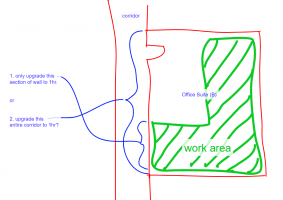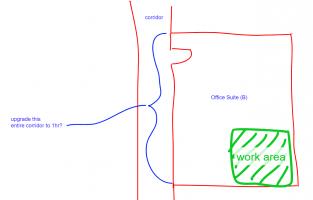Ryan Schultz
SAWHORSE
In a renovation, with the following 'work area', where we have to upgrade a corridor wall to 1hr rated, would approach (1) work, or would we have to do (2)--that is upgrade the entire corridor wall to 1hr?

How about in the 2nd image, with a more internal work area? Would we have to upgrade the entire corridor wall to 1hr? Or could that corridor wall remain unrated?


How about in the 2nd image, with a more internal work area? Would we have to upgrade the entire corridor wall to 1hr? Or could that corridor wall remain unrated?

